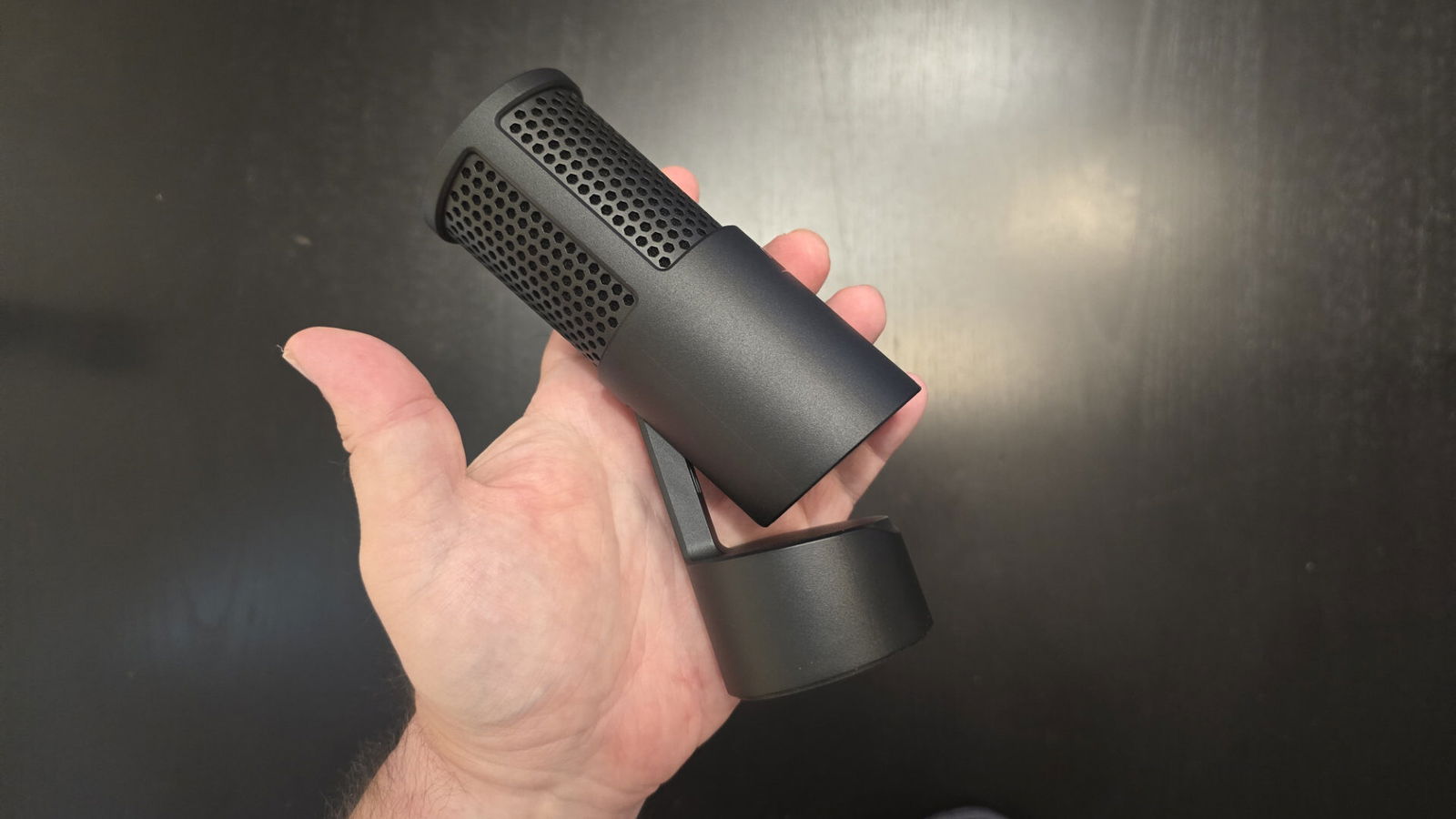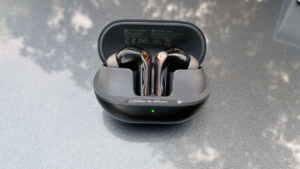In the early stages of streaming, HyperX was one of the dominant names in the space, with the HyperX QuadCast’s unique design and RGB lighting becoming a bit of a status symbol on camera. The company has released a number of microphones since then, mostly within the same design scheme but built with incremental improvements. The HyperX SoloCast was their biggest departure at the time, offering a budget-friendly, simple plug-and-play mic for people who just wanted to get started on a content creation journey.
Now, nearly five years removed from the original SoloCast, the HyperX SoloCast 2 has entered the scene. While it maintains the simplicity and plug-and-play characteristics of its predecessor, its design is sleeker and more creative, keeping with a more modern aesthetic and landing somewhere between the QuadCast and the original SoloCast.

In the box, you get the HyperX SoloCast 2, a USB-C to USB-A cable, and the documentation. The stand for the microphone is seamlessly built into the mic, making it appear as part of the microphone’s body, which is clever. However, it does make the microphone sit a little farther from your mouth if you’re the type who doesn’t use a mic arm. The stand includes a built-in 3/8- and 5/8-inch combo thread for more versatile mounting on a mic arm.
“The HyperX SoloCast 2 has an all-plastic body with a metal mesh, but it feels like a hefty microphone.”
The HyperX SoloCast 2 has an all-plastic body with a metal mesh, but it feels like a hefty microphone, weighing in at 330 grams. That weight is partly due to the stand being built into the design. It doesn’t feel flimsy, particularly around the capsule where the mesh meets the body.
The microphone has a 14-millimetre condenser capsule with a cardioid polar pattern and offers up to 24-bit depth and a sampling rate of up to 96 kilohertz. It has a frequency response of 20 hertz to 20 kilohertz and includes filters and controls that can be accessed through HyperX’s NGenuity software.

It has been some time since I last reviewed a device from HyperX, and I was hoping for more improvement in the NGenuity software’s interface compared to competitors who have really excelled in this space. The software uses a simple design with clear controls, allowing you to adjust mic gain, modify your sound with a 10-band EQ (and save multiple presets), apply frequency filters (low-pass, high-pass and presence boost) and add effects such as compression, a limiter and AI noise reduction with several sensitivity levels.
“The actual quality of vocals captured by the HyperX SoloCast 2 is impressive, given its status as a budget microphone.”
Credit is due to the NGenuity software’s effects. Many microphones’ AI noise reduction features degrade audio quality, making it sound tinny and, to my ears, unusable. Here, the vocal quality remains largely untouched. However, it isn’t true vocal isolation. Sudden noises that aren’t part of your voice can still be noticeable, and fluctuating background sounds—such as an oscillating fan that grows louder and quieter—also present challenges.
Because the HyperX SoloCast 2 is a condenser microphone, it’s more sensitive to sound in general and will pick up more ambient noise than a dynamic mic. Noise reduction can help, but out of the box, it’s simply a noisier microphone—a product of its condenser capsule design. That’s not a HyperX problem. To the company’s credit, it has done significant work to reduce vibration noise, which could otherwise be distracting.

The actual quality of vocals captured by the HyperX SoloCast 2 is impressive, given its status as a budget microphone. Out of the box (ambient noise aside), the vocal profile is fairly flat, which works well for many users but is especially useful for equalization, offering a clean slate from which you can shape your voice. This contrasts with many microphones that are heavy on low, mid or high frequencies, forcing you to use EQ to compensate rather than refine from a neutral starting point.
The HyperX SoloCast 2 retails for $59.99 US, which is a fair price for what it offers. It’s competitive with microphones from Chinese manufacturers that lack the cachet HyperX enjoys—something rare in this space. Larger brands often attach a premium price to their microphones based on name alone. When compared to its quality, the SoloCast 2 represents strong value for beginners in content creation who don’t want to—and shouldn’t—spend too much to get started.
- Designed to capture less unwanted noise: Engineered from the inside to reduce vibrations from the outside, with a built-in suspension system that delivers shock mount benefits in a compact, no-fuss design.
- An All-In-One mic that doesn’t ask for more: Everything you need is built in — foam pop filter, tiltable stand, and mic arm threads. No extras required. Just clear sound and a smart design for a setup that keeps things simple.






